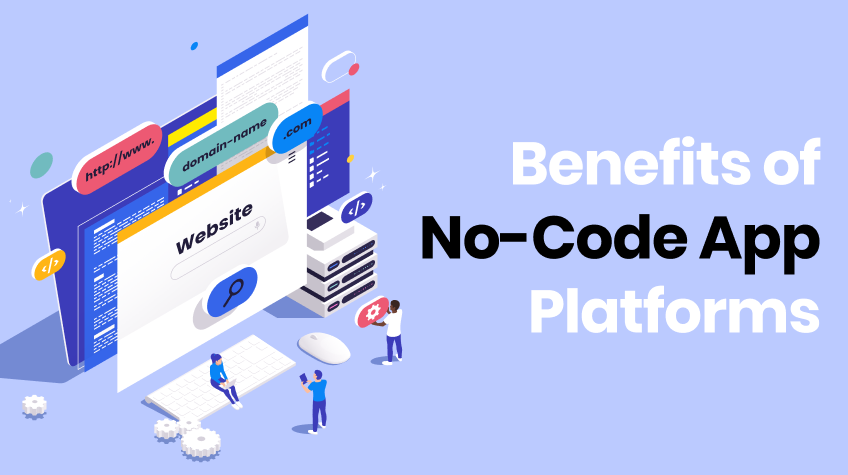
In the era of digital transformation, speed and agility are everything. Businesses need to adapt to changing market demands quickly, and traditional app development, bogged down with lines of code, can feel like a snail race. Enter the rising star of no-code app development – a revolutionary approach that empowers anyone, regardless of technical expertise, to build powerful apps. But what are the real benefits of ditching the code and embracing this visual wonderland? Buckle up, because we’re about to break down the most compelling reasons why no-code is making waves.
No-Code Development Platforms (NCDPs) allow you to create fully functional apps without writing any code. They provide visual interfaces and drag-and-drop tools that make app development accessible to people without traditional programming skills.
What are the difference between no code vs traditional coding
| No-Code | Traditional Coding | |
| Skillset | Requires no coding expertise. Anyone with basic computer literacy can build apps using visual interfaces and drag-and-drop tools. | Requires experienced developers with programming skills in specific languages and frameworks. |
| Development Speed | Significantly faster. Apps can be built and launched in weeks or even days. | Slower, as it involves writing and testing code from scratch. Apps can take months or even years to develop. |
| Cost | Generally lower due to reduced reliance on expensive developers and faster development cycles. | Higher due to the need for skilled developers and longer development timelines. |
| Flexibility | Limited customization options compared to traditional coding. Best suited for simpler apps or those with predefined templates and functionalities. | Highly customizable. Can create apps with virtually any functionality or feature, limited only by the developer’s imagination and technical expertise. |
| Control | Less control over the underlying code, which can sometimes restrict integrations and advanced features. | Full control over the code, allowing for deep integrations and tailored solutions. |
| Maintenance | Often easier to maintain and update due to the visual nature of the development process. | Can be more complex to maintain and update, as changes often require careful code modifications. |
Benefits of No-Code App Development
1. Supercharged Speed:
Time is money, and no-code platforms understand that. Their drag-and-drop interfaces and pre-built functionalities let you build apps in weeks, not months. No more waiting for developers to decipher your vision line by line – you’re the driver, steering your app to life at lightning speed. This rapid development cycle allows you to test, iterate, and launch updates quickly, putting you ahead of the competition in the race for innovation.
2. Democratizing Development:
Forget the gatekeepers of code. No-code platforms democratize app development, making it accessible to anyone with an idea and a laptop. Business analysts, marketers, even passionate customers can now bring their visions to life without needing to speak the language of programmers. This opens up a vast pool of creativity and problem-solving potential, leading to apps that are truly aligned with user needs.
3. Reduced Costs, Maximized Value:
Traditional development teams come with hefty price tags. No-code platforms, on the other hand, eliminate the need for large developer teams and extensive coding, slashing development costs significantly. This opens up the door for smaller businesses and startups to compete on the app landscape, leveling the playing field and fostering inclusivity. Plus, the ability to build and iterate quickly means you get more value out of your investment, maximizing your return on every digital penny.
4. Agility in the Face of Change:
The market is a fickle beast, and businesses need to be nimble to survive. No-code platforms enable rapid adjustments and updates, allowing you to adapt to changing trends and user feedback seamlessly. No more waiting for months to implement a new feature – with no-code, you can pivot and adapt on the fly, ensuring your app remains relevant and responsive in the ever-evolving digital landscape.
5. Collaboration, Amplified:
No-code platforms are built for teamwork. Their intuitive interfaces and real-time collaboration features let different teams – from business to IT – work together seamlessly on the same project. This fosters a culture of shared ownership and innovation, breaking down silos and leading to apps that are truly representative of the collective brainpower behind them.
6. Reduced Maintenance Headaches:
Traditional apps often become tangled webs of code, making maintenance a nightmare. No-code apps, with their pre-built functionalities and visual interfaces, are much easier to update and maintain. You can fix bugs, add features, and tweak functionalities without needing to delve into complex codebases, saving time and resources in the long run.
7. Data-Driven Decisions:
Many no-code platforms come equipped with powerful analytics tools that provide insights into user behavior and app performance. This data-driven approach allows you to make informed decisions about your app, identify areas for improvement, and optimize it for better user engagement and growth.
8. Enhanced Security and Scalability:
No-code platforms are built with security and scalability in mind. They often have built-in security features and protocols, reducing the risk of security breaches. Additionally, no-code apps can easily scale to accommodate growing user numbers and increased data volumes, ensuring your app can adapt as your business thrives.
9. Prototyping Made Easy:
No-code platforms are ideal for quickly prototyping your app ideas. You can build basic versions of your app without extensive coding, test them with potential users, and gather valuable feedback before investing in full-fledged development. This iterative approach helps you validate your concept and refine your app before committing significant resources.
10. Empowering Innovation:
No-code platforms open the door for experimentation and innovation. Anyone within your organization can explore new ideas and build small, focused apps to address specific problems or test unique concepts. This democratized approach can lead to unexpected breakthroughs and foster a culture of creative problem-solving within your team.
When to Choose No-Code:
- Rapid prototyping and testing of app ideas
- Building simple apps with predefined features
- Empowering non-technical users to create apps
- Reducing development costs and time-to-market
- Prioritizing ease of use and maintenance
No-code and traditional development are not mutually exclusive. They can complement each other to create a more efficient and versatile app development approach. Organizations can leverage no-code for rapid prototyping and building simpler apps, while relying on traditional development for complex or highly customized solutions. The key is to understand the strengths and limitations of each approach and make informed decisions based on your specific project needs and resources.






